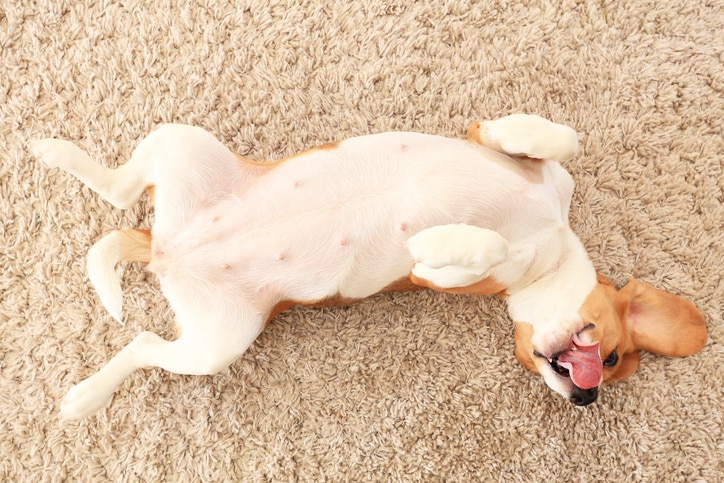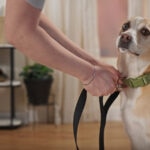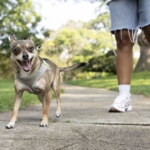Do Dogs Have Belly Buttons?

Photo by dimarik / iStock / Getty Images Plus
It’s no secret that most dogs love belly rubs, but as you give your furry friend a tummy pat, you might have wondered whether there’s a belly button beneath that thin layer of fur. Canine belly buttons can be hard to detect, but dogs do have them.
Here’s the full scoop on your dog’s belly button and how you can find it, along with veterinarian advice on how to spot health issues with your dog’s navel.
Why Do Dogs Have Belly Buttons?
If you didn’t expect your dog to have a belly button, you’re not alone. But like all mammals—including humans—puppies in the womb receive oxygen and nutrients from the mother by means of an umbilical cord.
“After birth, the mother chews off the cord, or it’s cut by a person assisting. The remaining stump dries up and falls off, leaving behind a scar—this becomes the belly button,” says Sarah Cortright, DVM, chief medical director of the Underdog Community Project in Los Angeles.
By the time a puppy is old enough to leave their mother, the scar is typically healed and easily goes unnoticed.
What Do Dog Belly Buttons Look Like?
Compared to a human belly button—which might form an indentation or protrude slightly—there is a lot less variety in the shape and appearance of a dog belly button. A healthy dog belly button is not an innie or an outie.
“It’s usually a small, barely visible vertical or circular scar or a wrinkle on the skin,” says Carol Osborne, DVM, of Chagrin Falls Veterinary Center & Pet Clinic in Ohio. Looking at your dog’s belly, you’re unlikely to immediately notice the belly button, because it’s smooth and typically the same color as the rest of your dog’s skin.
“It may look like a faint wrinkle, a small hairless spot, or a subtle scar,” agrees Dr. Cortright.
Where Is a Dog’s Belly Button?
So, if you want to find your dog’s navel, you’ll have to do a little searching.
A dog’s belly button is on the underside of the abdomen, just below the ribcage and above the genitals. You’re more likely to feel your dog’s belly button rather than spot it because it’s usually covered by your pet’s fur.
“Gently feel the area while your dog is lying on their back,” Dr. Cortright says. “You may notice a small, flat scar or a subtle bump [but] it can be hard to detect, especially in furry breeds.”
Once you feel the scar, you can part the fur and spot the belly button. If you can’t find it, that’s normal. You can always ask your veterinarian for a little help.
Do Dog Belly Buttons Have Health Issues?
A dog’s belly button should be smooth and flat, so if it protrudes outward or sinks inward, it could indicate a problem.
“The most common issue is an umbilical hernia, which occurs when abdominal contents (like fat or intestines) protrude through an opening in the abdominal wall at the site of the umbilicus,” says Dr. Cortright. (The umbilicus is the belly button’s medical name.) Umbilical hernias are usually resolved when your dog is spayed or neutered.
Other concerning symptoms include pain, redness, swelling, or warmth around your dog’s belly button. These can indicate infection, which is especially common in puppies who may have been strays, says Dr. Osborne.
Consult your veterinarian, especially if your pet also becomes lethargic, lacks an appetite, or starts vomiting.
Dog Belly Buttons FAQs
Q: Is it normal for a dog to have a belly button?
A: Yes, it’s normal. Although it may be hard to see, every dog has a belly button. It marks the spot where the umbilical cord was attached to supply the growing puppy with nutrients and oxygen. When the umbilical cord is removed after birth, the attachment tissue gradually dries up and falls off, leaving behind a small mark on the dog’s belly.
Q: What should a puppy’s belly button look like?
A: A puppy’s belly button should be mostly flat and the same color as the rest of your dog’s belly.



